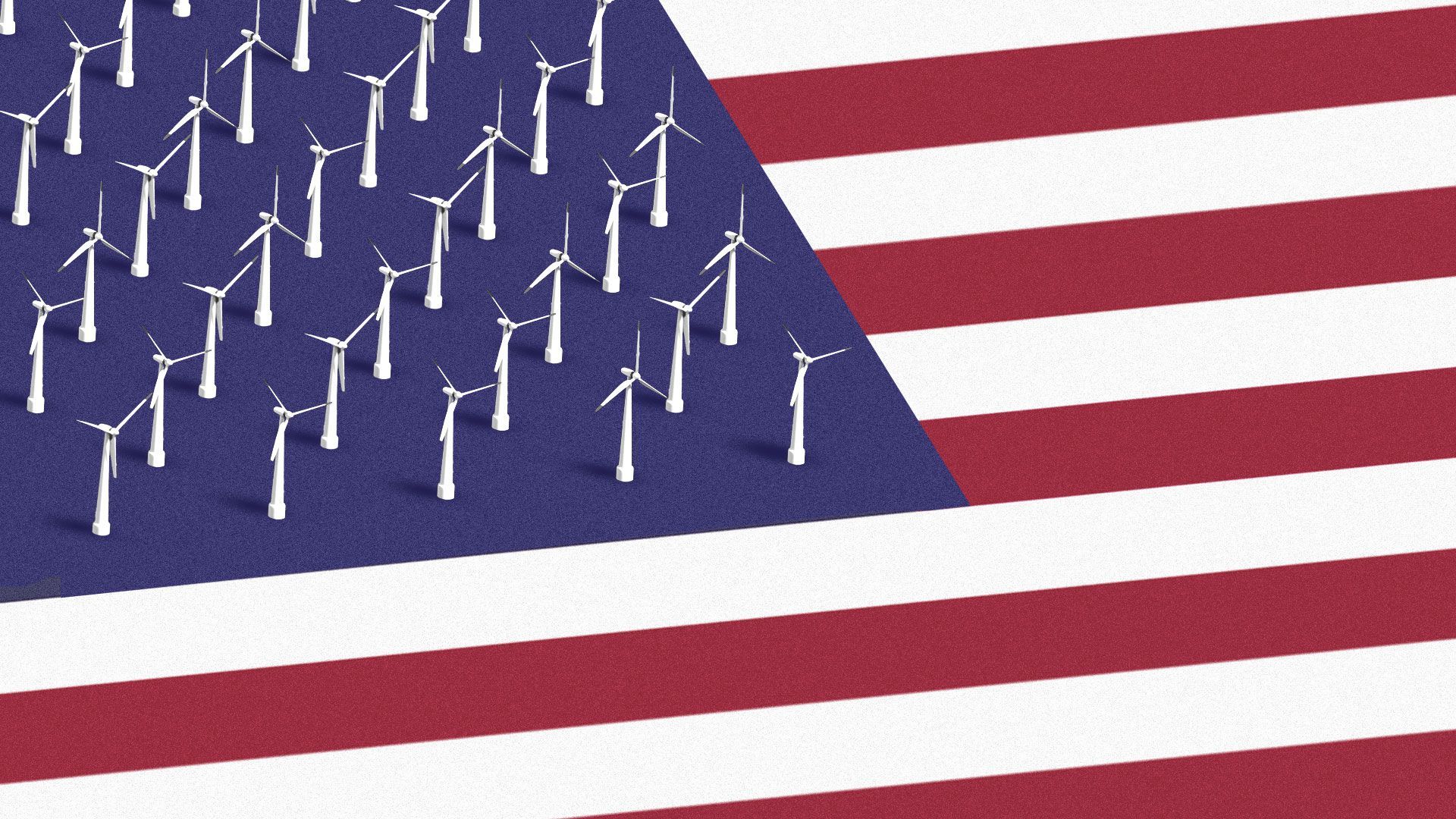| Plans for the first major U.S. offshore wind project are closer to reality now that the Interior Department has completed an environmental review of Vineyard Wind, which is proposed for construction off Massachusetts. Why it matters: Offshore wind has been very slow to develop here despite large power generating potential, but a wave of projects are now planned off the coast of Atlantic states including New York and New Jersey. Deep-pocketed companies including Equinor, Shell and BP, Portugal's EDP and others are involved in various partnerships for U.S. projects. Where it stands: Yesterday Interior announced the completion of its formal environmental impact statement for the 800 megawatt Vineyard Wind project. It's a joint venture between Copenhagen Infrastructure Partners and Avangrid Renewables, which is an arm of Spanish power giant Iberdrola. Per Reuters, the impact statement's formal publication later this week will launch a 30-day comment period before a decision on final approval. The big picture: Analysts see substantial growth in the U.S. offshore wind market over the next decade. The research firm BloombergNEF forecasts that nearly 20 gigawatts of U.S. offshore wind capacity will be installed by 2030. What they're saying: "[A]lthough offshore wind remains more expensive than other renewable power resources, we are observing an increasingly favorable policy environment for the nascent industry," ClearView Energy Partners said in a note. They write that six states have offshore wind deployment targets, and also note that the federal spending and tax package signed into law in late 2020 makes federal tax credits available for projects developed for years going forward. | 





No comments:
Post a Comment